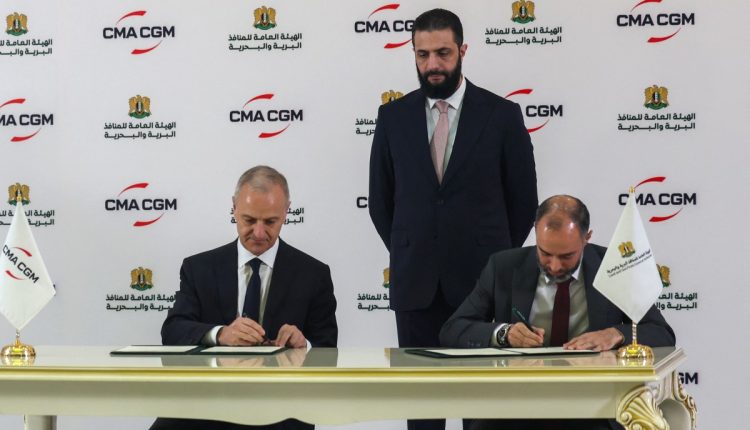Maintaining power or restoring al-Jolani… Where does al-Sharaa stand?
By Shoresh Darwish
In a commentary on the CSIS podcast published on March 20, 2025, conducted by John Alterman with the journalist from The Economist, Nicolas Pileham, who interviewed the interim Syrian president, Ahmed al-Sharaa, numerous impressionistic phrases are used in an attempt to craft a well-rounded profile of the new Syrian authority figure. According to Pileham’s portrayal, al-Sharaa is depicted as a man who only seeks power. He is described as having “changed hats and organizations many times and convinced many people that he is something other than the man he turned out to be. The only true thing we know about him is that he is honest with himself, wants power, and intends to keep it by any means—fair or foul.”
The audience supporting the new authority, which has expanded in the wake of the recent defeat of the corrupt and bloody Assad regime, perceives al-Sharaa as two personalities inhabiting one body: a calm, well-groomed man with a beard, dressed in a formal suit, named Ahmed al-Sharaa, who wishes to leave his past behind; and another who wears a keffiyeh and is capable of silencing opponents through wrongful means.
Much like Stevenson’s fictional story “Dr. Jekyll and Mr. Hyde,” where the gentle, benevolent character transforms into an evil, wicked one in a bitter struggle for ultimate control over the protagonist’s behavior, some supporters of al-Sharaa see him in that light. They call for him to revert to his early persona that established his character, then to abandon that persona after they are freed from the headache of minorities and obstacles standing in the way of their dream of a “homogeneous society.” These calls became prominent during the bloody events in the coast and on several occasions when dealing with opponents of his authority, such as the Druze. Undoubtedly, the dialogue about dealing with the Kurds, especially al-Jolani’s discussions, holds a central place among those claiming to support al-Sharaa. All of this persists despite al-Sharaa’s success in dispelling the ghosts of war with the Syrian Democratic Forces through his agreement with General Mazloum Abdi.
But what does the title “Pragmatist” that has been attached to al-Sharaa throughout his period of consolidating his authority in Damascus actually mean? Is pragmatism a political virtue, or is it merely a description of a person who is unpredictable in his moods and whims and capable of changing himself to preserve power? In reality, pragmatism seems to precede the phase of rule itself.
In the Idlib experience, al-Sharaa demonstrated a consistent flexibility in dealing with the envoys of Western countries and their journalists, who sought to rediscover, evaluate, and present him in a different image from that embodied by the figures of violent extremism such as Osama bin Laden, Anwar al-Awlaki, Abu Musab al-Zarqawi, especially Abu Bakr al-Baghdadi, and the commanders of ISIS, who represented the most extreme dogmatism. Their showy and lawless violence was the clearest expression of pure evil and brutality.
In the Idlib experience as well, working with Western organizations and their Syrian affiliates created a space for joint work, mutual benefit, and presenting alternative visions in favor of the “Salvation Government,” despite its stringent social and religious stance. The issue of disciplined jihadist coexistence between Syrian jihadists and foreign fighters in one framework also attracted Western attention; al-Jolani was able to tame the violent tendencies of foreign jihadists towards the outside world, or perhaps temporarily disable them. Conversely, he agreed to give them free rein in the Syrian coast after many of their leaders were incorporated into the Ministry of Defense.
There are facts that led to al-Sharaa’s transformation into what is now described as pragmatic. However, this shift did not result from self-review, introspection, or critical self-assessment presented by al-Sharaa himself or by his organization. The process of dismantling the dominance of ISIS, defeating it in its strongholds in Mosul and Raqqa, and killing its leaders through precise military and intelligence operations, along with the Israeli war on Gaza and southern Beirut, and the subsequent elimination of most of the top leaders of Hamas and Hezbollah, laid the theoretical foundations for al-Sharaa’s pragmatic transformation.
This is because killing the leaders of extremist organizations can shatter their organizational structures or weaken them as much as possible. The approach of assassinating these leaders is based on the idea of killing the first man, then the next in line to replace him, and so on.
The readiness for war and the attacks on the Druze in Saqhnaya, Jaramana, and Suwayda reveal a frightening continuation and repetition of what happened to the Alawites. The “disciplining” round is capable of being reinitiated in all directions. Moving from subjugating one community—whether local or national—to another is only a matter of time. The horrific acts committed against the Alawites are currently being carried out against the Druze, and could potentially target the Kurds if circumstances permit. Ultimately, these actions are aimed at the Sunni religious groups and liberal environments. All of this is part of reaching the desired Syrian “homogenization” phase.
This suggests that the goals of the authority go beyond merely maintaining power through political games, negotiations, and reconciliations. Instead, they involve coercion, imposing hegemony, and subjugating groups—methods that are wrong and illegitimate for preserving authority. Conversely, the regime appears flexible and overly hopeful about lifting external sanctions, gaining American recognition, and using Arab mediations and others to mitigate the threat from Israel. Moreover, it shows a willingness to go further, such as joining the Abraham Accords, to stay in power.
In reality, there is an ongoing “Jolanization” within the country—an effort to control the situation through brutality and violence, wearing the gloves of “uncontrolled groups” so as not to leave the regime’s fingerprints on the crime scene. This game cannot deceive Tel Aviv, which is well aware of the internal landscape of the regime and may punish it for crossing the “Druze red line” and expanding southward.
From a practical standpoint, there are no alternatives to al-Sharaa taking power in the current Syrian context. There is no clear, organized opposition in its national rhetoric and aspirations, nor are there comparable national military forces to the complex military and security apparatus that al-Sharaa now monopolizes. Additionally, the interim president has external supporters backing his absolute authority.
The question remains: what motivates a man who controls Damascus to adopt a violent approach to solving his governance issues (despite denying the abuses carried out in the name of state authority)? And what causes “pragmatism” to collapse so easily and forcibly in response to demands for local governance and national partnership? It is most likely that the regime is trying to blend between “Jolanization”—as a symbolic, intimidating state of affairs capable of committing abuses—and al-Sharaa, who is capable of signing agreements like the one he signed with General Mazloum Abdi on March 10 of this year.
However, ultimately, these two personas cannot coexist within a single power structure. Either al-Sharaa will overthrow al-Jolani and those around him—an almost impossible scenario—or the disastrous situation in Syria will persist until al-Sharaa’s opponents and external allies tire of this regime, which relies solely on violent options to address internal problems. This means that maintaining power forces al-Sharaa to eventually re-engage with al-Jolani, despite his efforts to convince the West that he abandoned it on December 9, 2024. In reality, he is compelled to re-engage with it day after day.




Comments are closed.